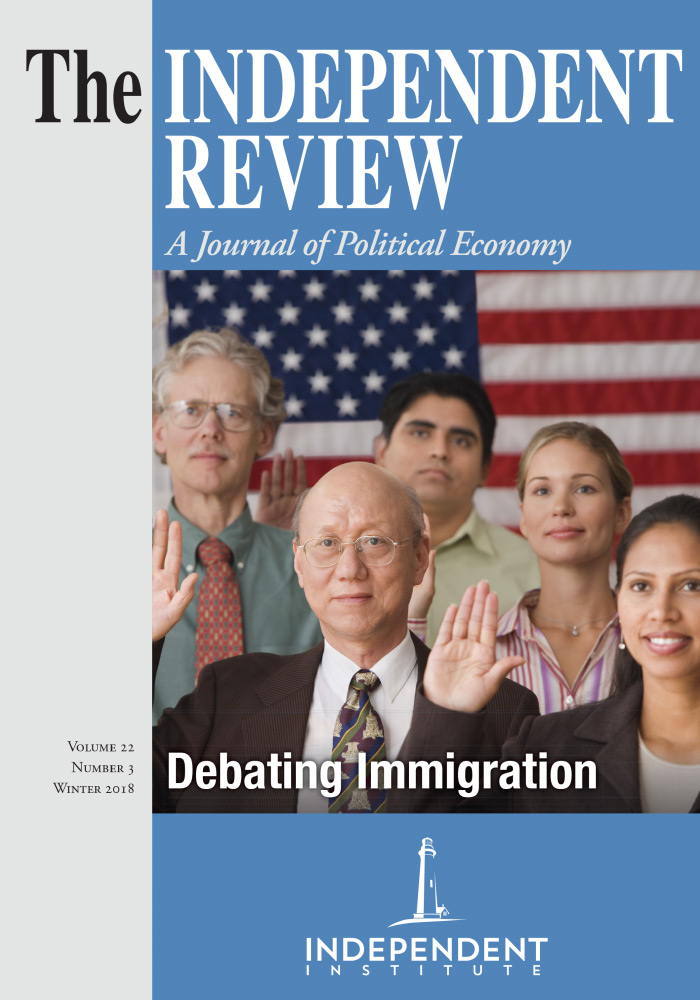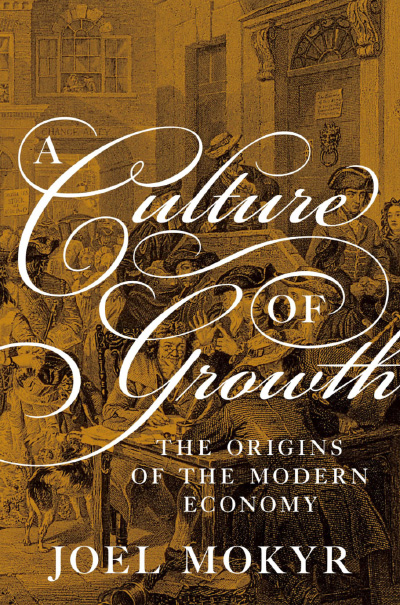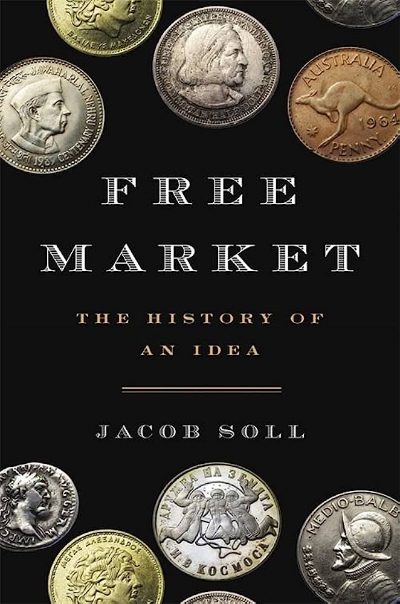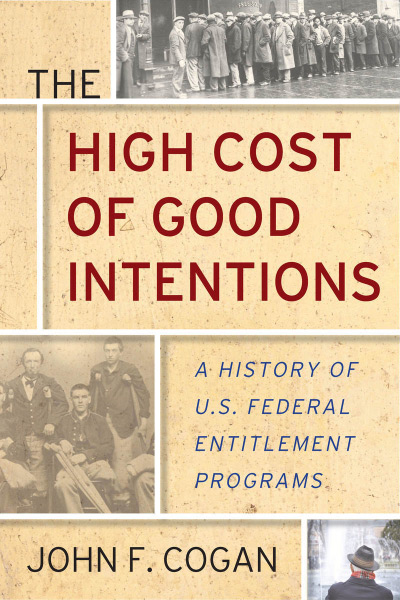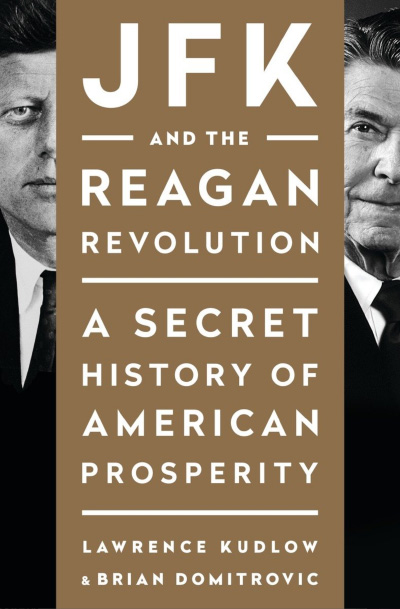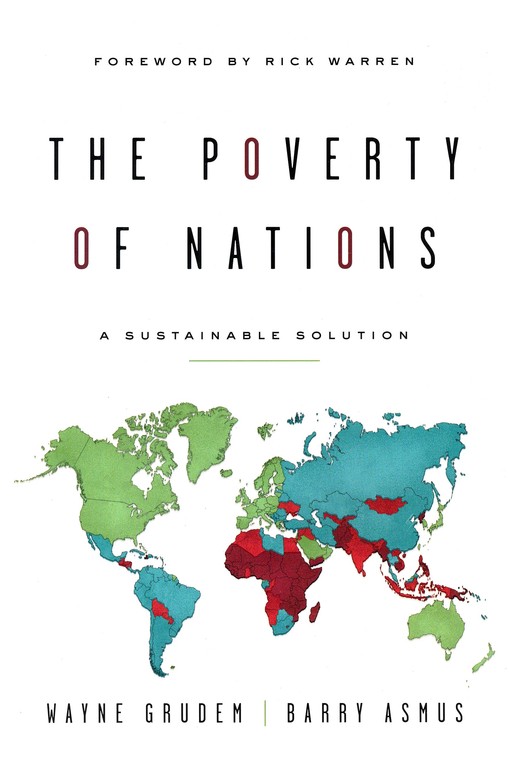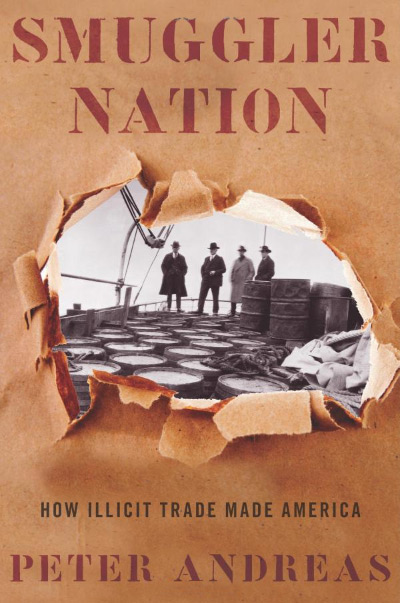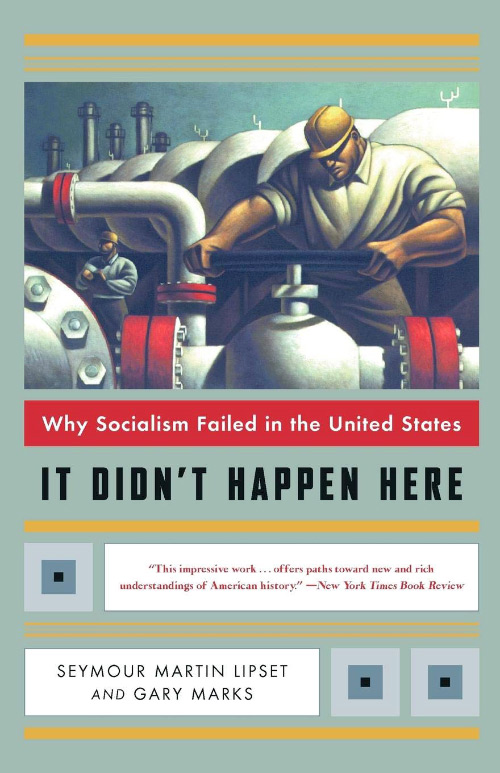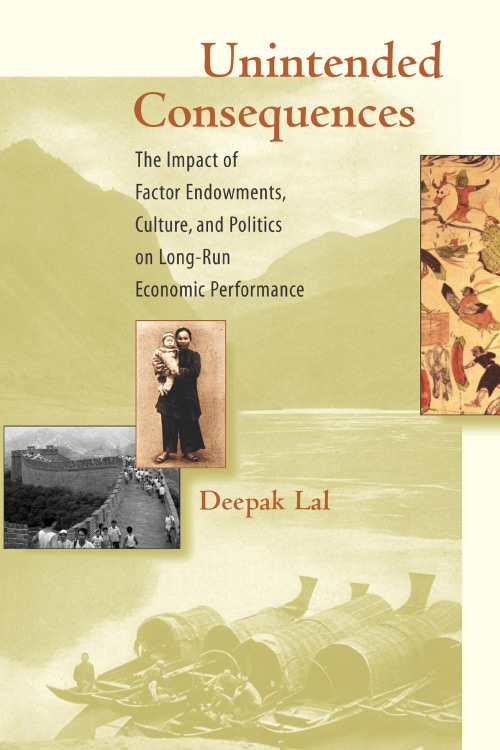Joel Mokyr is among the foremost experts in economic history and the history of innovation writing today. Thus, the publication of his latest book, A Culture of Growth, has been widely anticipated. The book’s main aim is to uncover the reasons why earlymodern Europe became increasingly open to new ideas, theories, and concepts between 1500 and 1800 and to explain why such a “culture of growth” did not emerge elsewhere in the world.
Mokyr has been writing about the origins of innovation and modern economic growth for the past thirty years, since he began The Lever of Riches: Technological Creativity and Economic Progress (Oxford: Oxford University Press, 1990). Along the way, he has moved from a focus on the study of technology and scientific innovation to the role that culture plays in generating new ideas and inventions. Throughout, he has been motivated by questions such as, What was the link between science and innovation? Why did previously innovative societies, including ancient Rome or Song China, cease to innovate? Why was it during the Industrial Revolution that innovation became the norm and scientific development cumulative? Over the course of his career, Mokyr has explored many aspects of these questions. In the past decade, he has advanced the concept of an “Industrial Enlightenment” in order to characterize those important features of British society that in the eighteenth century helped to give rise to the Industrial Revolution.
In his previous work, Mokyr’s argument has centered around the importance of technology and on the fact that sustained advances in technology are the ultimate drivers of modern growth. The arguments developed in each of the books he has written, however, have been subtly different. The Lever of Riches focused on the causes of technological innovation. In The Gifts of Athena: Historical Origins of the Knowledge Economy (Princeton, N.J.: Princeton University Press, 2002) and The Enlightened Economy: An Economic History of Britain, 1700–1850 (New Haven, Conn.: Yale University Press, 2009), Mokyr advanced what one could consider cultural arguments for the rise of not only inventors and innovators but also a workforcemade up of tinkerers and “improvers” in eighteenth-century England. But in those books he shied away from investigating in full the forces that gave rise to such a culture of practical innovation and improvement.
This is the task that A Culture of Growth sets for itself, and the book represents recognition that culture has finally arrived as an important and legitimate concept in discussions of economic growth. In this endeavor, the book is an important landmark.
A Culture of Growth is divided into five parts. The first part is a meditation on how economists should think about culture. It discusses models of cultural evolution inspired by biologists and evolutionary scholars and models of choice-based cultural evolution developed by economists. It probes a number of important questions without offering a definitive answer to them: To what extent is cultural evolution analogous to biological evolution? Why do parents inculcate particular cultural values in their children? How might institutions shape cultural change? The topics Mokyr addresses here are difficult ones. The serious study of the determinations of cultural change is a recent development in the social sciences. Students and scholars working in the field will benefit from the intelligent and rich discussion provided in A Culture of Growth. But readers interested solely in the historical argument Mokyr is building may be advised to begin the book in part 2.
Part 2 is really where the economic history begins. Whereas economic historians are often accused of focusing on abstract forces such as the accumulation of capital or productivity, Mokyr advances the argument that specific individuals called “cultural entrepreneurs” played a crucial role in the historical development of innovative economies in the period between 1500 and 1800. Cultural entrepreneurs include innovators such as Martin Luther, Adam Smith, and Karl Marx, who developed new arguments and theories and successfully advanced them in the market for ideas. They acted as focal points around whom new ideas could coalesce. The key cultural entrepreneur in Mokyr’s account is Francis Bacon. Bacon mattered less for his own writings than for the project he envisioned of putting science to work for material progress. His ambitions for the application of science to industry were then taken up by savants and fabricants, who developed and tested hypotheses and built and improved machines and tools.
As one expects from Mokyr, the argument is developed in great detail and is carefully situated within the latest historical scholarship in the field. At all points, he is keen to acknowledge caveats and possible counterarguments while still advancing the thesis that the influence of, first, Bacon and his disciples and then Isaac Newton was decisive in shaping a shared culture of innovation and progress after 1600.
Great individuals and scientists mattered, but they did not act on their own, and Mokyr depicts in vivid detail the followers and secondary figures who played a crucial role in disseminating the new ideology of progress—individuals such as SamuelHartlib, who was a significant player in the establishment of the Royal Society, and John Wilkins, warden of Wadham College Oxford and another founder of the Royal Society.
Mokyr stresses that it was individuals like these who helped build a marketplace for ideas. But, of course, this process was not deliberate or planned. Rather, it was the result of spontaneous order and cultural evolution in which the actions of various writers, intellectuals, and scientists across Europe established a shared community of innovators—known as the Republic of Letters. This community was a forum in which ideas could be tested and disputed and norms of good behavior and scientific standards emerged. The account of the rise of the Republic of Letters is the focus of parts 3 and 4 and constitutes the most original aspect of the argument advanced in A Culture of Growth.
In previous eras and in other societies, innovators were often silos—brilliant individuals working more or less in isolation, such as Leonardo de Vinci, or dependent on the patronage of a single individual, often a monarch whom they might offend or displease. But individual genius was not enough to produce a culture of innovation. And the patronage systems of most premodern societies were not conducive to the pursuit of potentially disruptive and innovative ideas.
What was required was the emergence of metainstitutions that could filter and disseminate knowledge and provide incentives to innovate. The Republic of Letters performed this role. It was a forum where scientists and scholars could engage with one another in the common pursuit of knowledge. As Mokyr documents in detail, the Republic of Letters crossed national and religious borders and followed strict rules of intellectual engagement. It thus made possible an active market for ideas—that is, a forum where ideas could be refined, tested, and rejected or eventually accepted and built upon. Despite the famous stories that we are familiar with, of clashing egos and feuds over the development of calculus, in general the Republic of Letters was remarkably open to new scholars advancing ideas that overturned existing orthodoxies but also successful at vetting out quacks and charlatans and advancing best-practice methods. Participants in the Republic of Letters practiced an important form of analytic egalitarianism and hierarchy of merit, whereby individuals were judged on the basis of their ideas and not their social pedigree. Mokyr argues that in general the Republic of Letters was successful in weeding out bad ideas and enabling good ideas to diffuse and spread.
Some of these ideas are familiar (not least from Mokyr’s earlier work), but as an economic historian Mokyr excels at pointing out how technology and institutions complemented the rise of a culture of shared ideas and innovations. To take one mundane but fascinating example, consider how crucial the emergence of a Europewide postal service was to scholarly communication. This service began in the fifteenth century when the de Tasso family organized a postal system in Italy, and then it expanded into the Holy Roman Empire in the sixteenth century. It was built along existing trade routes and benefited from the growth of European-wide commerce. By the seventeenth century, a postal network linked all of Europe and made a continuous and reliable correspondence between scholars living in different countries feasible for the first time since the demise of the Roman Empire.
The development of the European postal system illustrates the importance of cultural unity and political fragmentation in Mokyr’s argument. Numerous scholars have argued that political fragmentation was key to Europe’s eventual rise. But this argument has often been underspecified, relying either on a direct but misleading analogy between countries and firms or on the notion that political competition led to fiscal competition and lower taxes, an argument for which there is little historical or empirical support. It was not decentralization per se that was crucial. India was fragmented for much of its history, as was the Middle East. What made Europe special, Mokyr argues, is the combination of cultural unity with political fragmentation and competition.
Political fragmentation alone was not sufficient for economic growth and innovation because it imposed economic costs. In many instances, it led to excessive military competition between states and to a proliferation of trade barriers (see Chiu Yu Ko, Mark Koyama, and Tuan-Hwee Sng, “Unified China and Divided Europe,” International Economic Review [forthcoming]). From the point of view of the purely static gains from trade and the division of labor, a unified empire like that of Rome or Qing China would surely have been preferable.
For Mokyr, the beneficial effects of Europe’s political divisions were dynamic, not static, and they were conditional. Only in conjunction with the existence of a thriving intellectual culture did Europe’s fragmentation became a critical ingredient in the eventual transition to modern growth. The political divisions of Europe meant that innovative and heretical thinkers always had an avenue of escape from heavy-handed political authorities. This escape valve was crucial because it prevented the ideas and innovations of the Renaissance and Reformation period from being suppressed or lost once the Counter- Reformation became ascendant in southern Europe after 1600. Political fragmentation allowed Ren´e Descartes and Pierre Bayle to flee France and Thomas Hobbes and John Locke to flee England. Even in southern Europe, the Roman Inquisition and royal authority were never able to destroy or fully eradicate forbidden literature, in contrast to what happened in Qing-era China (see Melanie Xue and Mark Koyama, Autocratic Rule and Social Capital: Evidence from Imperial China, Working Paper in Economics no. 16-50 [Fairfax, Va.: George Mason University, 2016]). The political divisions of Europe also meant that there were a host of potential patrons and protectors and that no writer or scientist was dependent on the favor of a single, all-powerful monarch.
Furthermore, a central point to Mokyr’s argument is that the cultural unity of Europe meant that the inventors, innovators, and tinkers in England and the Dutch Republic could build on the advances of the European-wide Scientific Revolution. Europe’s interconnectivity due to the Republic of Letters helped to give rise to a continent-wide Enlightenment culture that found in the British Isles a response from skilled craftsmen able to tinker with and improve existing technologies. In contrast, political fragmentation in the medieval Middle East or premodern India does not seem to have promoted innovation, and the political unity of Qing China produced an elite culture that was conservative and stifled free thinking.
In part 5, Mokyr turns to the question why such a culture of innovation did not emerge in China. He wrestled with the “Why not China?” question in The Lever of Riches a full decade before Kenneth Pomeranz’s publication of The Great Divergence: China, Europe, and the Making of the Modern World Economy (Princeton, N.J.: Princeton University Press, 2000). In Lever of Riches, Mokyr focuses on what institutional conditions precluded the emergence of innovative culture in Qing China (1644–1911) and on why important developments in Chinese scholarship and science did not lead to an intellectual flowering comparable to that of the European Enlightenment.
Mokyr is certainly correct to emphasize the critical institutional differences between China and Europe during the period before 1800. California School scholars such as Bin Wong and Ken Pomeranz have painted a picture of surprising resemblances between eastern and western Eurasia (see, for example, R. Bin Wong, China Transformed: Historical Change and the Limits of European Experience [Ithaca, N.Y.: Cornell University Press, 1997]; Pomeranz, The Great Divergence; and R. Bin Wong and Jean- Laurent Rosenthal, Before and beyond Divergence: The Politics of Economic Change in China and Europe [Cambridge,Mass.:Harvard University Press, 2011]). And, indeed, in terms of many purely economic factors, such as transport networks, protection of property rights, and the freedom of the market to function, the differences were either smaller or greater within Europe than between Europe and China. Nevertheless, from a political economy perspective, Qing China and early-modern Europe were very different. Mokyr’s conclusion here is worth quoting: “The failure of radically heterodox views to catch on in China underlines the fundamental difference between China and Europe: there were repressive and reactionary regimes galore in Europe, but the interstate competitiveness constrained their ability to enforce a specific orthodoxy. . . . [W]hat was missing in China’s institutions was a high level of competitiveness, both in the market for ideas and at the level of political power” (p. 317). This argument seems fundamentally correct and should be taken as an invitation for future research to investigate the most important sources of rigidity and flexibility in both Chinese and European institutions.
Clearly, then, A Culture of Growth is an important book. It is dense with ideas and arguments, historical details, and descriptions of notable scholars, scientists, and writers, and it displays the author’s mastery over a range of topics in the history of ideas, the economics of culture, and the comparative economic history of Europe and China.
Importantly, this is a book that should inspire future scholarship because it is chock full of ideas and insights, many of which are waiting to be developed further by economic historians. It sets the agenda for how scholars should think about the interaction among politics, institutions, culture, and innovation both by pushing back the focus from the Industrial Revolution to the preceding centuries and by conducting a serious comparative study of scientific development, institutions, and innovation.

